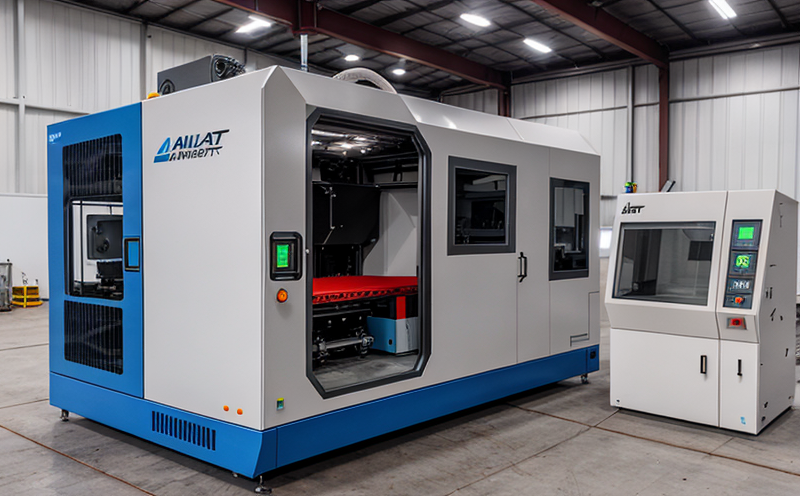EN ISO 52902 Accuracy Testing of AM Products
The accuracy testing of additive manufactured (AM) products is crucial in ensuring the reliability and performance of parts fabricated through AM processes. This service, governed by EN ISO 52902, provides a standardized approach to evaluating the dimensional accuracy of AM components. The test focuses on key parameters that directly impact the functionality and safety of these parts, particularly those used in critical industrial applications.
AM technology has revolutionized manufacturing processes, enabling the creation of complex geometries and lightweight structures with enhanced mechanical properties. However, achieving precise control over these processes is challenging, especially when dealing with intricate designs or demanding tolerances required by various industries. EN ISO 52902 addresses this challenge by offering a structured methodology for assessing the accuracy of AM parts.
The standard covers several aspects critical to ensuring accurate measurements and reproducibility in AM manufacturing. These include the selection of appropriate reference tools, the use of advanced metrology systems, and the definition of acceptance criteria based on specific application requirements. By adhering to these guidelines, manufacturers can ensure that their products meet stringent quality standards and are fit for purpose.
The accuracy testing process involves several key steps. Initially, specimens are prepared according to the design specifications provided by the manufacturer or client. These specimens serve as a basis for comparison against the final product's dimensions after AM processing. Advanced metrology tools such as coordinate measuring machines (CMMs) and laser scanning systems play a critical role in capturing detailed surface data.
Once the measurements are captured, they are compared to nominal values defined by the design drawings or engineering specifications. Discrepancies between actual dimensions and specified tolerances can indicate potential issues with process settings or material properties. It is essential for manufacturers to identify these deviations early in the production cycle to make necessary adjustments.
The results of EN ISO 52902 accuracy testing are typically documented in a comprehensive report that includes raw measurement data, graphical representations of part geometry, and statistical analyses highlighting any variations from expected dimensions. This information helps stakeholders understand the level of precision achieved during AM production and provides insights into areas where improvements could be made.
The importance of accurate measurements cannot be overstated, especially given the wide range of applications for AM parts across various sectors like automotive, aerospace, medical devices, and more. Ensuring high levels of accuracy not only enhances product performance but also contributes to overall safety by minimizing risks associated with dimensional inconsistencies.
In summary, EN ISO 52902 provides a robust framework for evaluating the accuracy of additive manufactured products through standardized testing procedures. By following this approach, manufacturers can maintain consistent quality standards while meeting regulatory requirements and customer expectations across diverse industries.
Why It Matters
The precision achieved in additive manufacturing is paramount for ensuring the integrity of end products used in demanding environments. The accuracy testing outlined in EN ISO 52902 ensures that fabricated parts adhere closely to specified design tolerances, which is vital for maintaining performance and reliability.
- Enhanced Safety: In sectors like aviation or automotive, where safety is a top priority, accurate measurements can prevent failures caused by dimensional inconsistencies. Ensuring precise dimensions helps mitigate risks associated with part failure due to improper fit or function.
- Better Performance: Components designed for specific applications require tight tolerances to operate efficiently and effectively. Accurate testing guarantees that these parts meet their intended performance criteria, leading to superior overall product quality.
- Regulatory Compliance: Many industries are subject to strict regulatory standards aimed at protecting public health and safety. Adhering to EN ISO 52902 ensures compliance with relevant regulations while demonstrating a commitment to excellence in manufacturing practices.
Incorporating accurate testing into your quality control process enhances trust between suppliers and clients, fostering long-term relationships built on mutual respect and reliability. This service plays an integral role in maintaining high standards within the industrial sector, contributing significantly to both individual company success and broader industry growth.
Applied Standards
The accuracy testing of additive manufactured products adheres strictly to EN ISO 52902, which provides a comprehensive set of guidelines for metrological evaluation. This international standard covers the requirements for accuracy assessment in AM processes, including selection criteria for reference tools, metrology systems, and acceptable deviations from nominal dimensions.
The standard emphasizes the importance of using appropriate measurement techniques tailored to specific part geometries and material types. It also highlights the need for robust quality control measures throughout the entire AM production cycle—from initial design through final inspection—to ensure consistent accuracy across all manufactured parts.
EN ISO 52902 defines acceptance criteria based on statistical analysis of measured data, taking into account factors such as part geometry complexity and material properties. Compliance with these standards ensures that fabricated components meet not only technical specifications but also industry best practices.
By following the procedures specified in EN ISO 52902, manufacturers demonstrate their commitment to producing high-quality products aligned with global benchmarks for metrological precision. This dedication translates into enhanced customer satisfaction and competitive advantage within the marketplace.
Why Choose This Test
- Precision Guarantees: Accurate testing ensures that additive manufactured parts meet exacting tolerances, enhancing overall product performance and reliability.
- Regulatory Compliance: Adhering to EN ISO 52902 helps manufacturers comply with industry-specific standards and regulations, ensuring safe and effective operation of end products.
- Enhanced Reputation: By demonstrating adherence to international best practices, companies can build trust with clients and stakeholders, fostering stronger relationships and increased market share.
- Cost Savings: Early detection of inaccuracies through rigorous testing prevents costly rework or scrap during later stages of production.
The EN ISO 52902 accuracy test offers numerous benefits beyond mere compliance, including improved product quality and enhanced customer satisfaction. It enables manufacturers to differentiate themselves in a competitive market by delivering consistently high-quality products that meet the highest standards of metrological precision.





